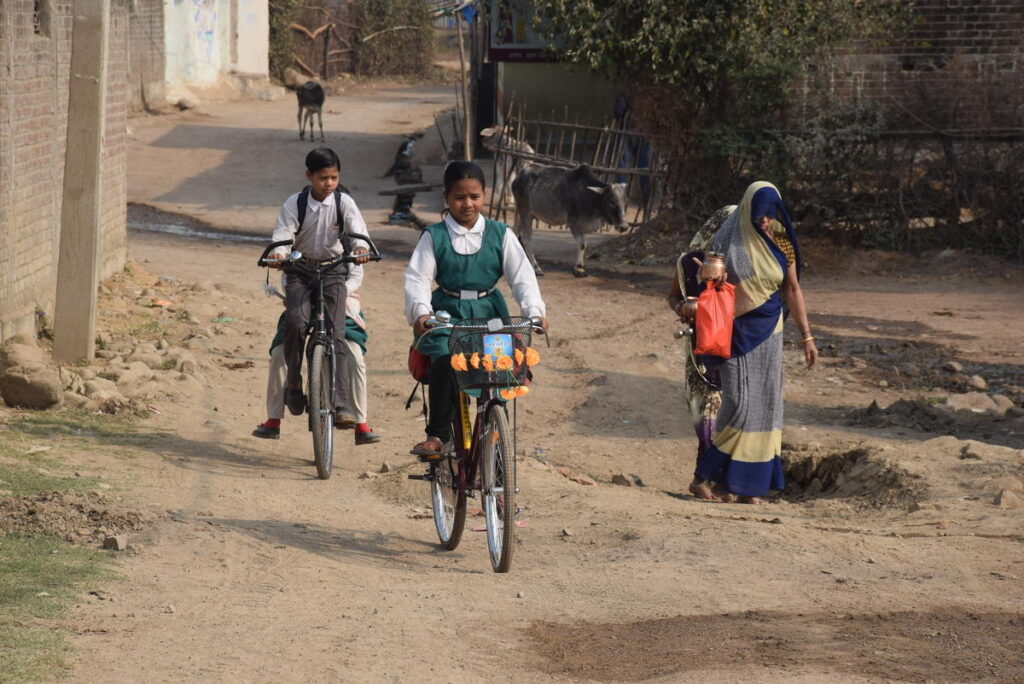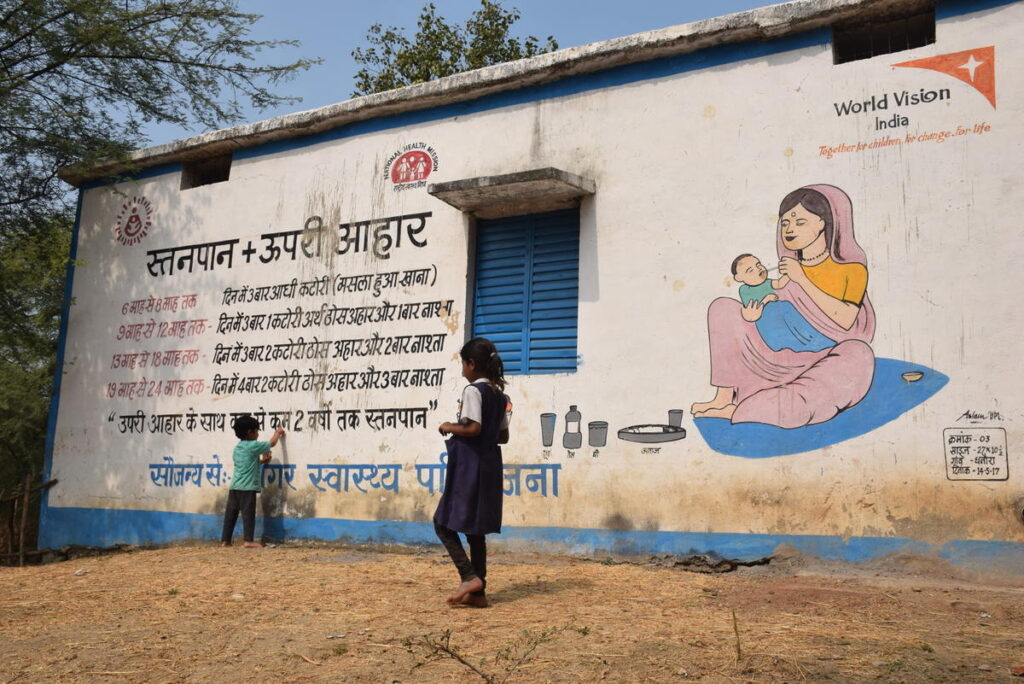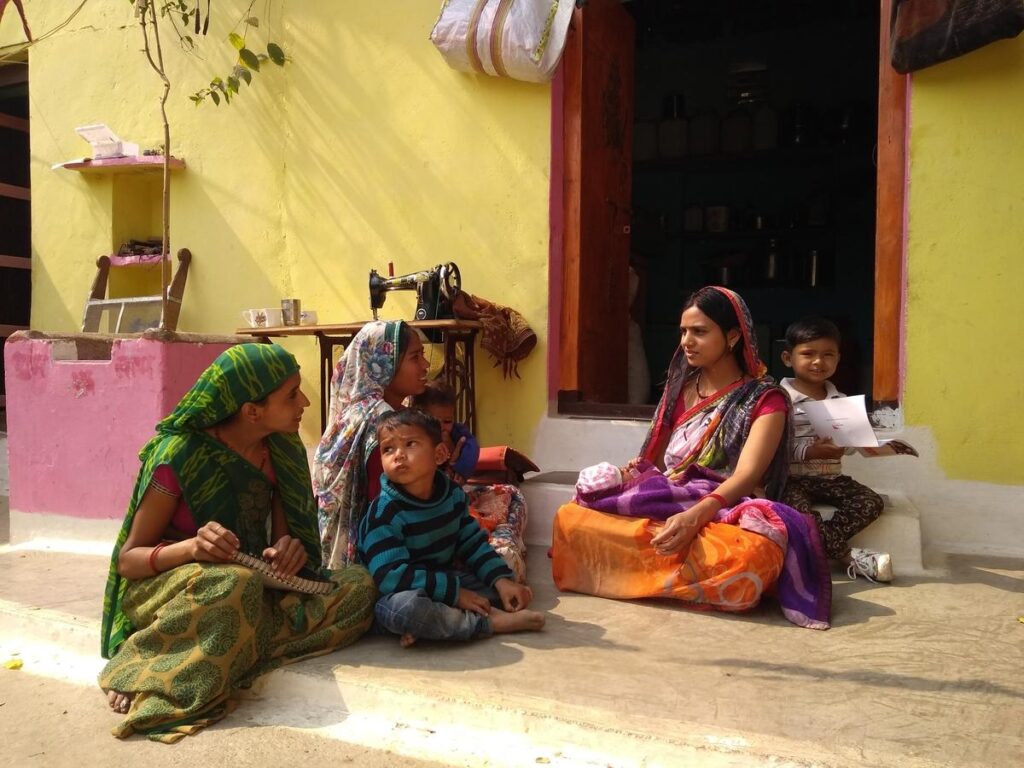Estimated read time: 5 minutes
Five years ago, Neha’s life looked very different than it does today. She was only 18 when her father arranged her marriage to a laborer in another state in India. Her first pregnancy was filled with fear and loneliness.
“I was very scared as I didn’t have enough knowledge about motherhood and there was nobody to guide me,” she says. “I never weighed myself, didn’t take the necessary vaccinations, and would hardly talk to anyone. I didn’t know anything about cleanliness. I delivered Arpit at home. My son fell sick very often. This continued for almost two years.”
Unfortunately, these problems aren’t uncommon for adolescent mothers.
How child marriage and maternal and child health are linked
At World Vision, we pursue God’s vision of “fullness of life” (John 10:10) for every child. In particular, we believe every girl should be free to enjoy her childhood, free to choose when and who she marries, and free to become a mother when she is physically and emotionally ready. Because of this, two of our key priorities are preventing child marriage and improving maternal and child health.
It may not seem intuitive, but child marriage and maternal and child health are closely linked. Nine out of ten adolescents who give birth do so within marriage, and unfortunately, complications during pregnancy and childbirth are the leading cause of death for adolescent girls globally. While it is critical that we work to prevent and end child marriage, we must also work to serve the needs of girls who are already married – and that is where maternal and child health programming becomes critical.
Preventing and responding to child marriage helps us reach our vision of fullness of life for every child, particularly when it comes to ending preventable child and maternal deaths. Delaying marriage helps to delay first birth, one of the most crucial factors in healthily timing and spacing a young woman’s pregnancies. Healthy pregnancy is much more attainable when a young woman is physically and emotionally ready to become a mother.

What are the health risks to child brides?
When girls are married young, they often move away from the home and community where they grew up, which can isolate them from important information, resources, and support. This leaves many child brides without access to the healthcare resources or information they need to make more informed decisions for their health and planning their families.
Child brides are more likely to become mothers at a young age. When child brides become young mothers, they may not know about or have access to the care they need for a healthy pregnancy such as prenatal visits and good nutrition, and they may also face stigma in accessing these services. Because of this, child brides are less likely to receive proper medical care during pregnancy and delivery, and they are also be less likely to seek critical follow-up care.
When you combine lack of proper medical care during pregnancy and childbirth with the physical immaturity of a very young mother, there are much greater risks for complications. Adolescent mothers (10-19 years) face higher risks of pre-eclampsia, fistula, and systemic infections than young women aged 20-24 years. This results in child brides experiencing devastatingly high rates of maternal mortality. In fact, adolescent mothers make up nearly 25% of global maternal deaths.
Additionally, the health of a mother is the primary factor for the health of her child. Babies of adolescent mothers face higher risks of low birth weight, pre-term delivery, and severe neonatal conditions. A mother’s age, the number of children she has, and the timing and spacing of her pregnancies are primary determinants of maternal and child survival. When a mother dies in childbirth, her baby’s chance of survival lowers to only 19%. Improving outcomes for a healthy mother during pregnancy and childbirth has a two-fold impact: when you save a mother, you have a much better chance to save the life of the child, too.

How do maternal and child health programs serve married girls and young women?
Improving health information and services for young married girls and couples is essential in serving child brides. Given that married adolescents often lack access to important health information, many programs specifically seek out adolescent mothers with information about caring for infants and children, healthily spacing births, and nutrition.
Another important piece of maternal and child health programming is ensuring health providers recognize that just because a girl is married when she becomes pregnant, it does not change the increased risks she faces in pregnancy and childbirth. Additionally, healthcare workers should also be sensitized to avoid contributing to any pressures on young brides to prove their fertility or stigma impacting whether or not a child bride seeks out care.
It is critical that young mothers are educated about maternal and infant nutrition needs, prenatal and postnatal care, and safe birth practices so that they can take control of their own well-being. It is also important that couples and families learn about healthy timing and spacing of pregnancies and have access to voluntary family planning methods if they choose, so that they do not have babies too soon or too close together.

Meeting the needs of mothers and children
When World Vision India started timed and targeted counseling (ttC) in her village, Neha attended the trainings. The knowledge she gained there—along with access to better health services—made a big difference in her second pregnancy.
After learning about healthy timing and spacing between pregnancies, she decided that she would wait to have her second child after her older son turned 3. Now Neha works as a ttC volunteer, helping train other young mothers.
“For my second child, I felt more prepared with not only information but also because I was training other women about the same things,” she says.
Today, her younger son, Harshit, is 4 months old—and much healthier than Arpit was at the same age.
ACT NOW:
Top photo: Neha and her son Harshit in India. (©2019 World Vision/photo by Neola D’Souza)


